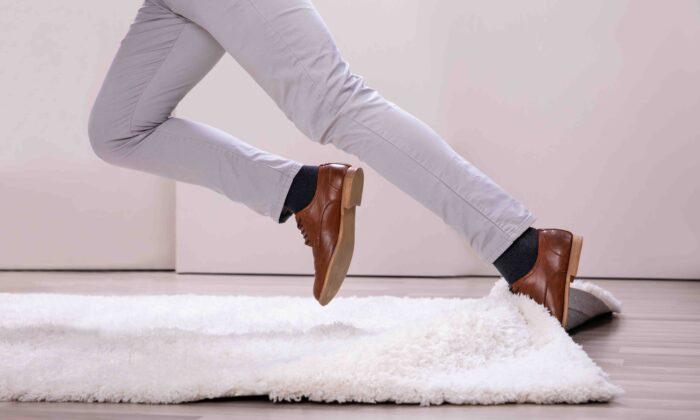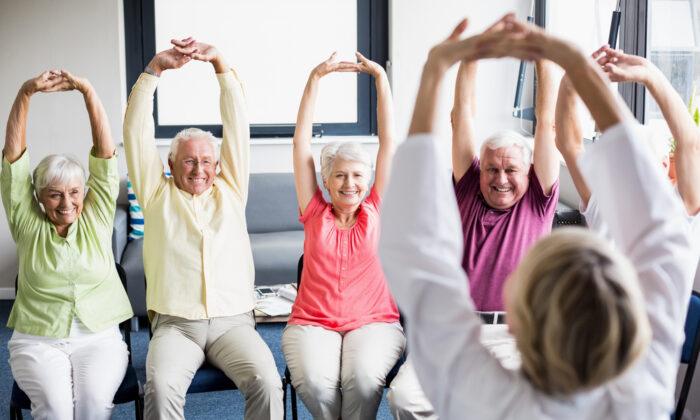Six out of every 10 falls happen at home, where we spend much of our time and tend to move around without thinking about our safety. There are many changes you can make to your home that will help you avoid falls and ensure your safety.
In Stairways, Hallways, and Pathways
- Have handrails on both sides of the stairs, and make sure they are tightly fastened. Hold the handrails when you use the stairs, going up or down. If you must carry something while you’re on the stairs, hold it in one hand and use the handrail with the other. Don’t let what you’re carrying block your view of the steps.
- Make sure there is good lighting with light switches at the top and bottom of stairs and on each end of a long hall. Remember to use the lights!
- Keep areas where you walk tidy. Don’t leave books, papers, clothes, and shoes on the floor or stairs.
- Check that all carpets are fixed firmly to the floor so they won’t slip. Put no-slip strips on tile and wooden floors. You can buy these strips at the hardware store.
- Don’t use throw rugs or small area rugs.
In Other Living Areas
- Keep electric cords and telephone wires near walls and away from walking paths.
- Secure all carpets and large area rugs firmly to the floor.
- Arrange your furniture (especially low coffee tables) and other objects so they are not in your way when you walk.
- Make sure your sofas and chairs are the right height for you to get in and out of them easily.
- Don’t walk on newly washed floors—they are slippery.
- Keep items you use often within easy reach.
- Don’t stand on a chair or table to reach something that’s too high—use a “reach stick” instead or ask for help. Reach sticks are special grabbing tools that you can buy at many hardware or medical-supply stores. If you use a step stool, make sure it is steady and has a handrail on top. Have someone stand next to you.
- Don’t let your cat or dog trip you. Know where your pet is whenever you’re standing or walking.
- Keep emergency numbers in large print near each telephone.
In Bathrooms and Powder Rooms
- Mount grab bars near toilets and on both the inside and outside of your tub and shower.
- Place non-skid mats, strips, or carpet on all surfaces that may get wet.
- Remember to turn on night lights.
In Your Bedroom
- Put night lights and light switches close to your bed.
- Keep a flashlight by your bed in case the power is out and you need to get up.
- Keep your telephone near your bed.
Your Own Medical Alarm
If you’re concerned about falling, think about getting an emergency response system. If you fall or need emergency help, you push a button on a special necklace or bracelet to alert 911. There is a fee for this service, and it is not usually covered by insurance.Home Improvements Prevent Falls
Many State and local governments have education and/or home modification programs to help older people prevent falls. Check with your local health department, or local Area Agency on Aging to see if there is a program near you.Read about this topic in Spanish. Lea sobre este tema en español.
For More Information About Falls and Falls Prevention
National Resource Center on Supportive Housing and Home Modifications
213-740-1364
[email protected]
www.homemods.org
Rebuilding Together
800-473-4229
[email protected]
www.rebuildingtogether.org
Centers for Disease Control and Prevention (CDC)
800-232-4636
888-232-6348 (TTY)
[email protected]
www.cdc.gov
National Center for Injury Prevention and Control
Centers for Disease Control and Prevention
800-232-4636
888-232-6348 (TTY)
[email protected]
www.cdc.gov/injury
National Falls Prevention Resource Center
571-527-3900
www.ncoa.org/center-for-healthy-aging/falls-resource-center/
This content is provided by the NIH National Institute on Aging (NIA). NIA scientists and other experts review this content to ensure it is accurate and up to date.






Friends Read Free